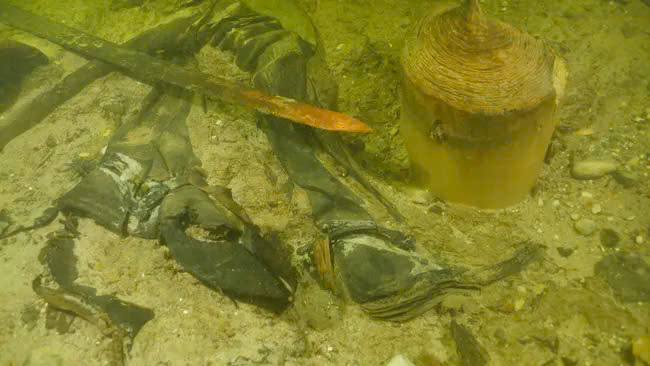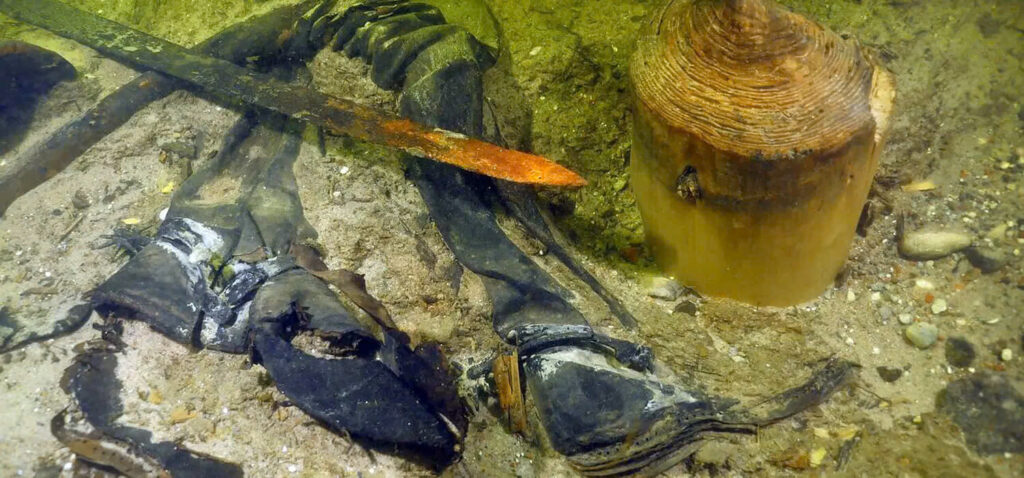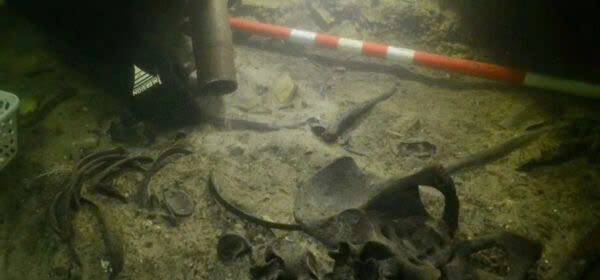A Remarkable Underwater Discovery

In the depths of Lake Asveja in eastern Lithuania, a remarkable archaeological discovery has brought a 500-year-old soldier back into the light of day. During an underwater inspection of the Dubingiai Bridge, one of Lithuania’s longest wooden bridges, divers stumbled upon a skeleton accompanied by an array of well-preserved medieval artifacts. This unexpected find has opened a window into the region’s rich military history.
The Accidental Unearthing
The soldier’s remains were found 30 feet below the lake’s surface, buried under layers of sand and silt. Unlike a typical burial, this soldier had been naturally entombed by centuries of sediment deposits. The discovery occurred as workers were replacing the bridge’s aging wooden structure with metal supports.
A Soldier’s Final Resting Place

Archaeologists from Klaipėda University, led by Elena Pranckėnaitė, identified the skeleton as a male soldier from the 16th century. The body was surrounded by an impressive collection of military equipment:
- A pair of leather boots with spurs
- A leather belt with a buckle
- An iron sword
- Two knives with wooden handles
These artifacts not only confirm the individual’s status as a soldier but also provide invaluable insights into medieval military gear and practices.
Historical Significance of the Discovery
Dubingiai’s Strategic Importance
The location of the find, near the site of Dubingiai Castle, suggests that the soldier may have been connected to this important medieval stronghold. The castle, now in ruins, once stood proudly on a hilltop overlooking Lake Asveja, guarding a strategic crossing point.
A Glimpse into Medieval Military Life
This extraordinary preservation of both human remains and artifacts offers researchers a rare opportunity to study medieval military life in detail. The cold, low-oxygen environment at the bottom of Lake Asveja has kept these historical treasures in remarkably good condition.
Ongoing Research and Future Insights
Meticulous Analysis Underway

A team of experts at the National Museum of Lithuania is currently working to conserve and analyze the discovered items. Their goal is to piece together the story of this medieval soldier, potentially uncovering new details about life and warfare in 16th-century Lithuania.
Anticipating New Historical Revelations
Archaeologist Elena Pranckėnaitė and her colleagues aim to complete their analysis and share their findings within the next year. This research promises to provide valuable insights into a period of history that is often shrouded in mystery due to the scarcity of well-preserved remains.
Conclusion: A Submerged Time Capsule
The discovery of this medieval soldier in Lake Asveja serves as a poignant reminder of the historical treasures that may lie hidden beneath the surface of our lakes and rivers. As researchers continue to unravel the secrets of this underwater time capsule, we stand to gain a deeper understanding of medieval military life and the rich history of the Lithuanian region.

